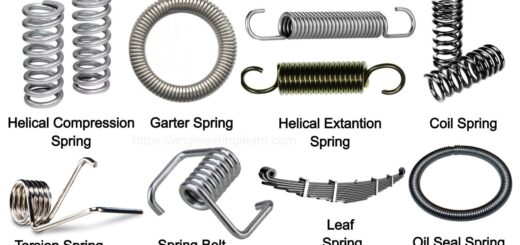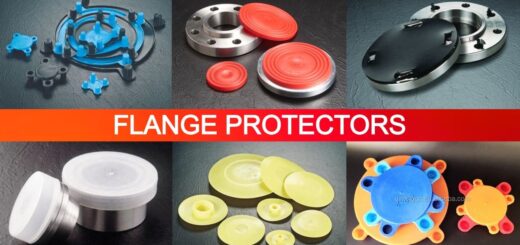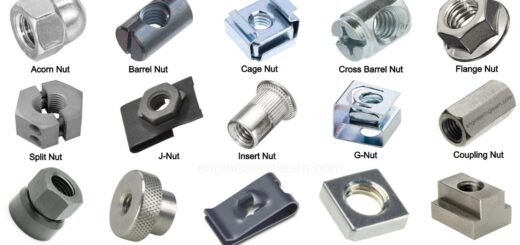12 Types of Flanges: Design, Functions & Flange Face [with Pictures]
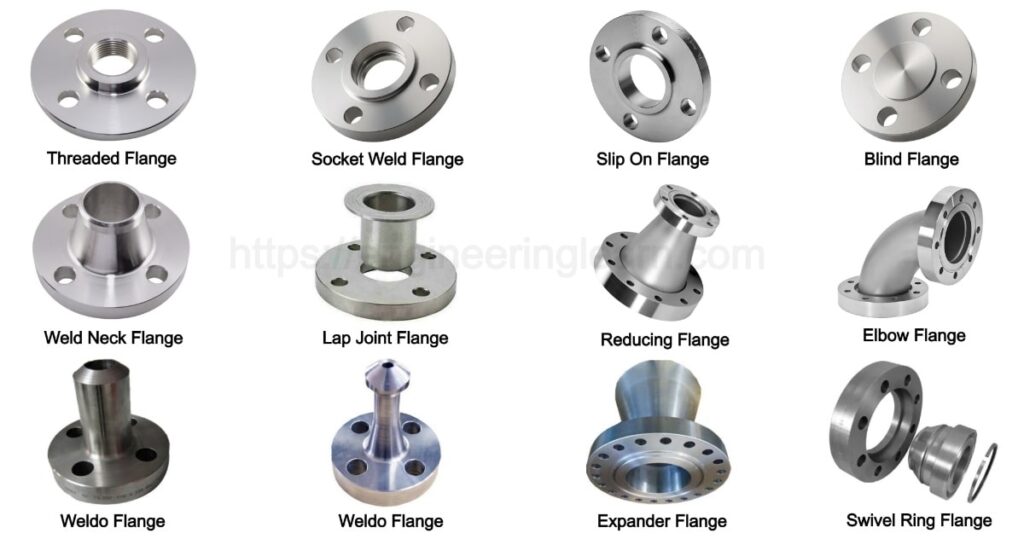
What is Flanges?
Types of Flanges: Design, Functions & Flange Face Types [with Pictures] :- Flanges are the second most reliable method which is used for joining after welding. The most reliable method is obviously the valves system. The usage of flanges adds a high level of flexibility in order to maintain a proper systems by allowing the easier disassembly and an improved access to the components of a system.
Coming to the categories of a flanged connection, there are three parts which are mentioned below:
- Pipe Flanges
- Gasket
- Bolting
In maximum cases, it is found that there is a specific gasket and bolting material which is made from the same materials as that of a piping flange components. Most commonly known flanges are the stainless steel flanges. Whereas the flanges are available in a very wide range of materials in order to match them according to the site requirement. Some most commonly known flange materials are Monel, Inconel and Chrome Moly which depends on the actual site requirement. The selection of the best material shall depend on the type of system within which you wish to use the flange with its specific requirements.
7 Common Types of Flanges
Flanges are of various types which can be selected according to the site requirement. In order to match the design of an ideal flange, reliable operations must be ensured along with this long service life and an optimal pricing should be taken care of. Scroll down to have a look at the most common flange types which are usually available.
1. Threaded Flanges: ( Types of Flanges )
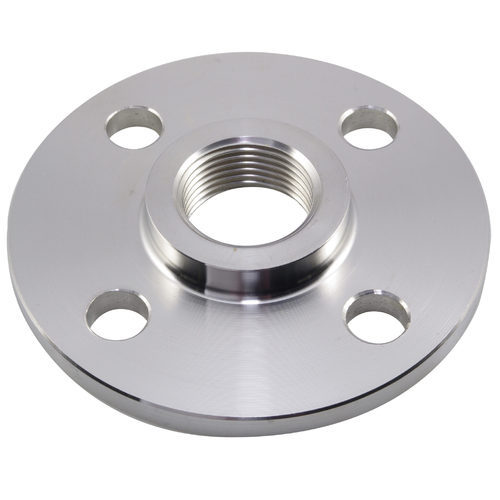
These are the flanges which are also referred to as a screwed flange and is found having a thread inside the flange bore that gets fit with the matching male thread on the fitting. The threaded connection here refers to as avoiding the welding in various cases. It is mostly connected by matching the threading to the pipes which is to be installed.
2. Socket Weld Flanges: ( Types of Flanges )
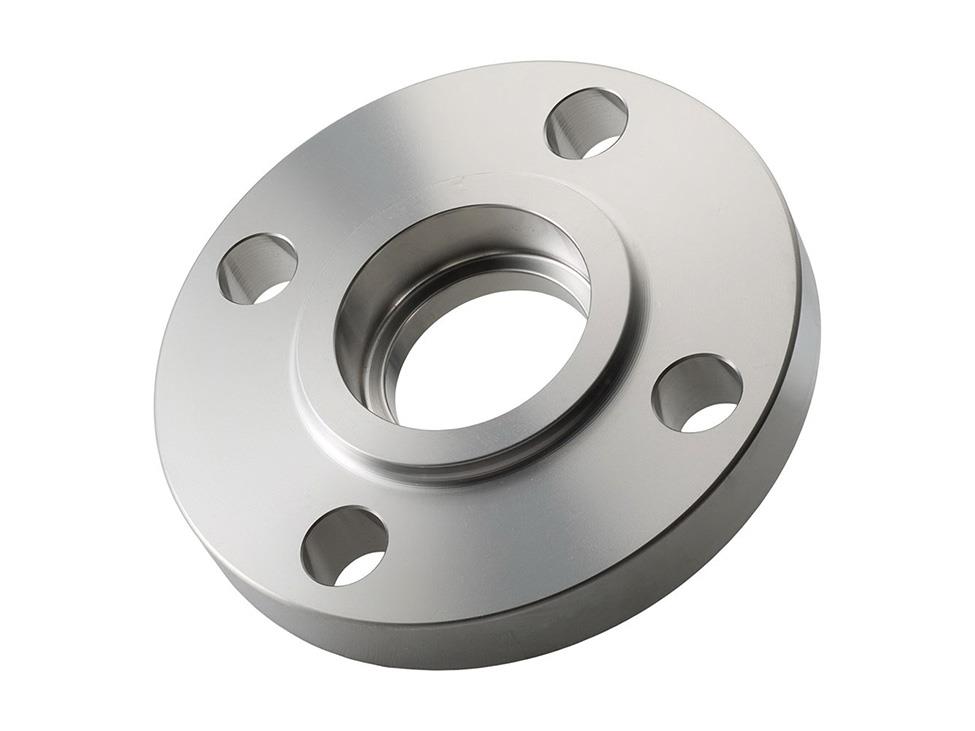
This type of flanges are usually used for smaller pipe wherein the diameters in low-temperature and low-pressure areas feature a connection in which the pipe is placed inside the flange in order to secure the connection with a single or multi-pass fillet weld. This is responsible for making the style simple in installing as compared to other welded flange types by avoiding the limitations that are associated with the threaded ends.
3. Lap Joint Flanges: ( Types of Flanges )
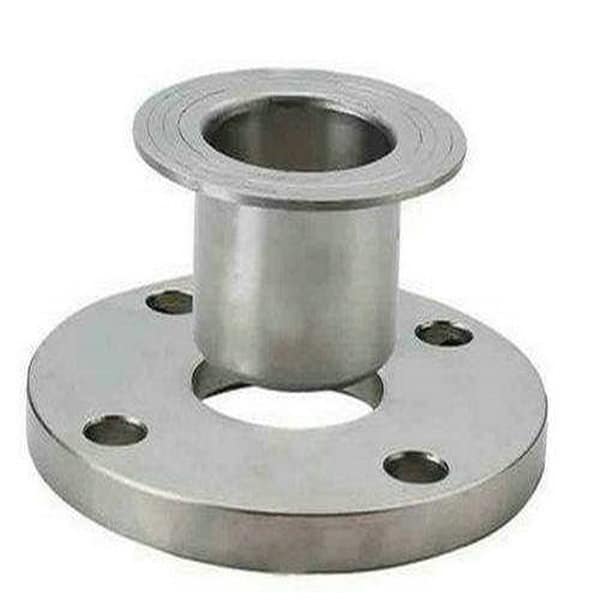
A lap joint flange is the one which requires a butt welding of the stub end to that of a fitting in order to use it with a backing flange and to create the flanged connection. This design is responsible for making this style popular for use in various systems which are found having a limited physical space or systems that requires a frequent dismantling or high maintenance.
4. Slip On Flanges: ( Types of Flanges )
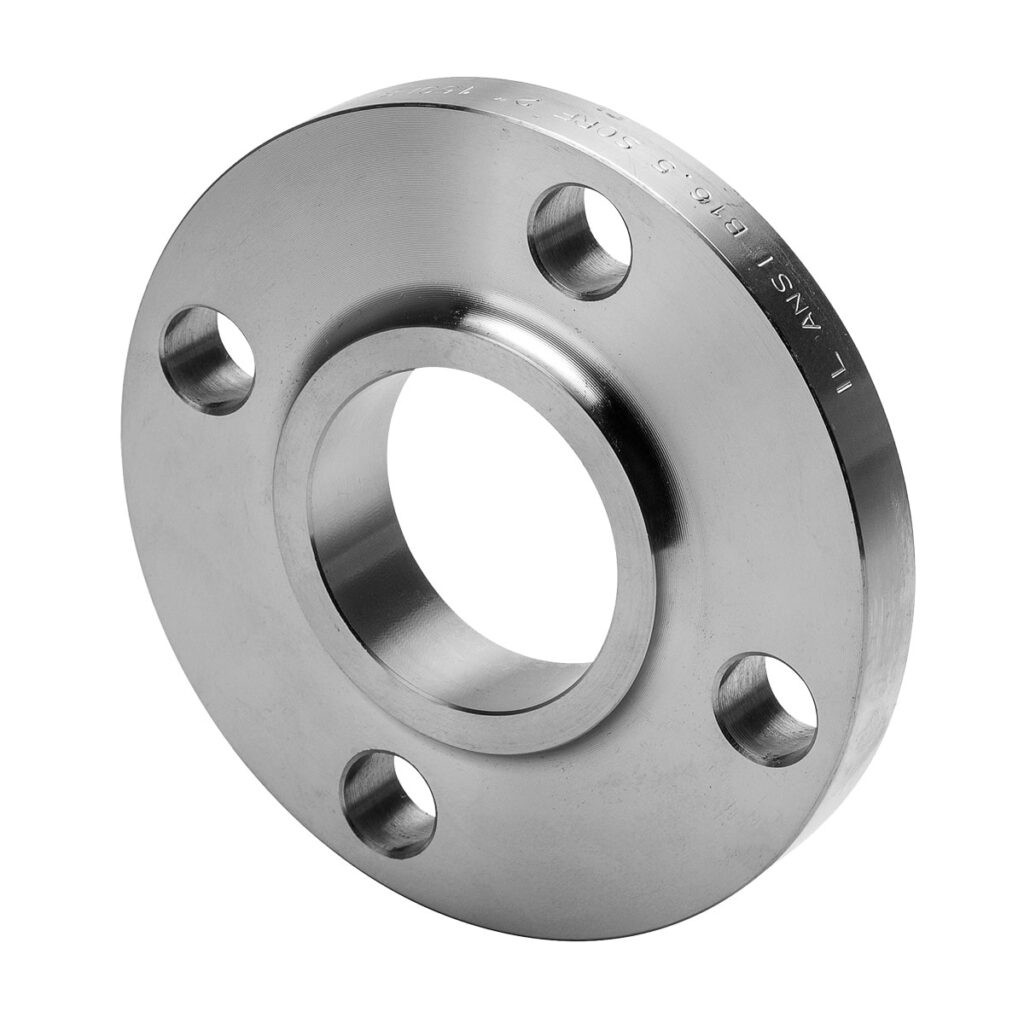
Slip-on flanges are found to be very common and also available in a wide range of sizes in order to accommodate the systems with high rate of flow and throughput. It is quite easy to install it by simply matching the flange with the outer diameter of the pipe in order to connect it. Installing these flanges is bit technical as there is a need of fillet weld on the both side in order to secure the flange to the pipe.
5. Blind Flanges: ( Types of Flanges )
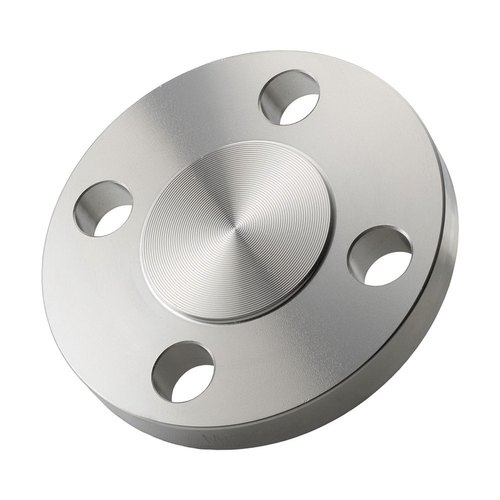
These type of flanges are highly used for terminating the piping system. The blind flanges are found to be shaped like a boltable blank disc. Once these are installed properly and combined with the correct gaskets, it can achieve an outstanding seal which is easy to remove whenever required.
6. Weld Neck Flanges: ( Types of Flanges )
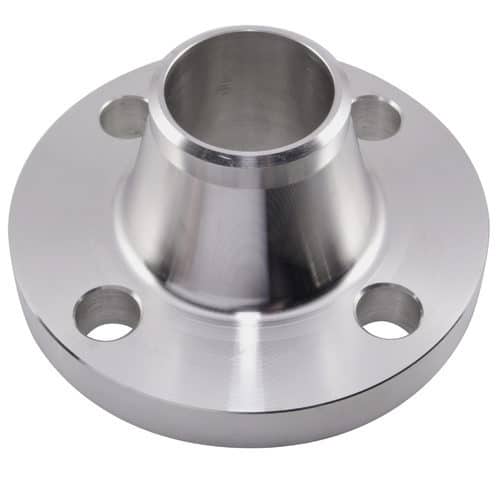
Weld neck flanges are quite similar to lap joint flanges but require a butt welding for installation. Whereas the integrity in the performance of this system along with the multiple repeat bends and the ability to use them in high-pressure and high-temperature systems makes them a leading choice for process piping.
7. Specialty Flanges: ( Types of Flanges )
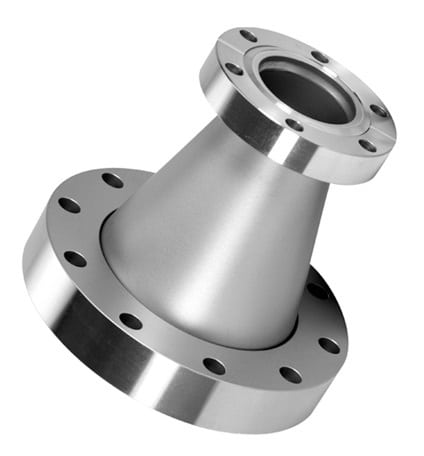
This type of flange is most commonly known to mankind. Whereas, there is a wide range of additional specialized flange types that are available in order to suit a range of uses and environments. There are various other options like nipoflanges, weldoflanges, expanding flanges, orifice, long weld neck and reducing flanges.
Flange Face Types
Face types are also quite important characteristic which is found having a major impact at the final performance as well as service life of the flanges. Therefore below are mentioned some of the most important types of flange facing:
5 Types of Flange Faces
1. Flat Face (FF)
It can be clearly predicted from the name that the flat face flanges are found having a flat and even surface which is combined with a full face gasket which contacts almost all the flange surfaces.
2. Ring Joint Face (RTJ)
These are the face flanges which are used in high-pressure and high-temperature processes. This face type is the one which has a groove in which a metal gasket sits in order to maintain the seal.
3. Raised Face (RF)
These are the types of flanges which have a small raised section near the bore with an inside bore circle gasket.
4. Male & Female (M&F)
These types of flanges are quite similar to the tongue and groove flanges which uses a matching pair of grooves and raised sections in order to secure the gasket. These retain the gasket on the female face which provides more accurate placement as well as increased options of the gasket material.
5. Tongue and Groove (T&G)
These are the flanges which inculcate a matching grooves and raised sections. This aids in installing as the design helps the flanges in order to align and provide a reservoir for the gasket adhesive.
Flange Dimensions and Common Considerations
Other than the functional design of a flange, its dimensions are the most likely factors which has an on the choices of impact flange while designing, maintaining and updating the piping system. Whereas one must consider the interfaces of flange with the pipe and the gasket which are in use in order to ensure the proper sizing. Other than this some of the common considerations are as follows:
Outside diameter : The outside diameter refers to the distance between the two opposing edges of the flange face.
Thickness : The thickness is measured from the outer side of the rim.
Bolt circle diameter : This is referred to as the distance between the opposing bolt holes which is measured from Centre to Centre.
Pipe size : Pipe size refers to as that dimension through which the flange gets corresponded.
Nominal bore size : Nominal bore size is the measurement of inner diameter of the flange connector.
Classification of Flange with Service Ratings
Flanges are mostly classified on the basis of their ability to withstand the varying temperatures and pressures. It is designated by using an alphabet or “#”, “lb” or “class” suffix. These are the suffixes which are interchangeable and meanwhile also differ from region to region or vendor to vendor. The common classifications which are known are as follows:
- 150#
- 300#
- 600#
- 900#
- 1500#
- 2500#
Same amount of pressure and temperature tolerance varies by the material used, flange design and flange size. Whereas, the only constant is the pressure rating which decreases as the temperatures rises.
5 Special Types of Flanges
1. Weldo Flanges
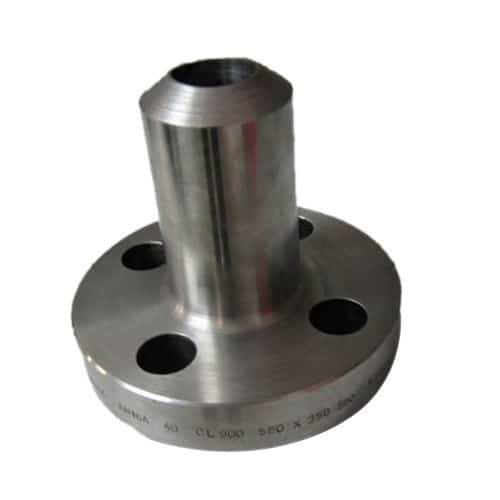
A Weldoflange is quite similar to a Nipoflange as it is a combination of a weld neck flange and a branch fitting connection. A weldoflange is made from a single piece of solid forged steel instead of welding separate parts together.
2. Nipo Flanges
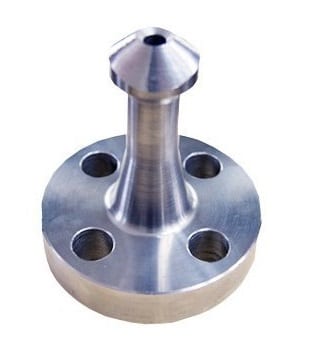
A Nipoflange refers to as a branch pipelines inclined at an angle of 90 degrees which is a product that is manufactured by the combination of a welding neck flange and a forged Nipolet. Whereas the Nipoflange is found to be a solid single piece of forged steel and is not understood as two different products which are welded together. The installation of Nipoflange includes the piping staff which is weld to the Nipolet part of the device in order to run the pipe and bolt the flanged part on the flange of the branched pipe.
It is very important to know that Nipoflanges are available in various types of materials like carbon with high and low-temperature carbon steel, stainless steel grades and nickel alloys. Nipoflanges are mostly manufactured in the reinforced variant which helps in giving it an additional mechanical strength in comparison to a standard Nipoflange.
3. Elbow Flanges And Latro Flanges
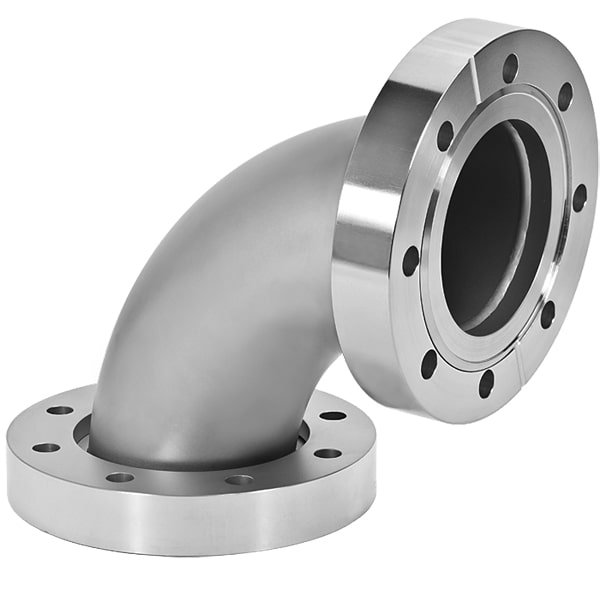
Elboflange is referred to as a combination of a flange and an Elbolet and Latroflange is referred to as the combination of a flange with a Latrolet. Elboflanges are used to branch a pipeline at an angle of 45 degrees.
4. Swivel Ring Flanges
Swivel ring flanges has the application of facilitating the alignment of the bolt holes amongst the two mating flanges which is comparatively very helpful in many circumstances like installing a pipeline with huge diameter, subsea or offshore pipeline and similar environments. These types of flanges are the ones which suit oil, gas, hydrocarbons, water, chemical and other demanding fluids in the applications of petrochemical and water management.
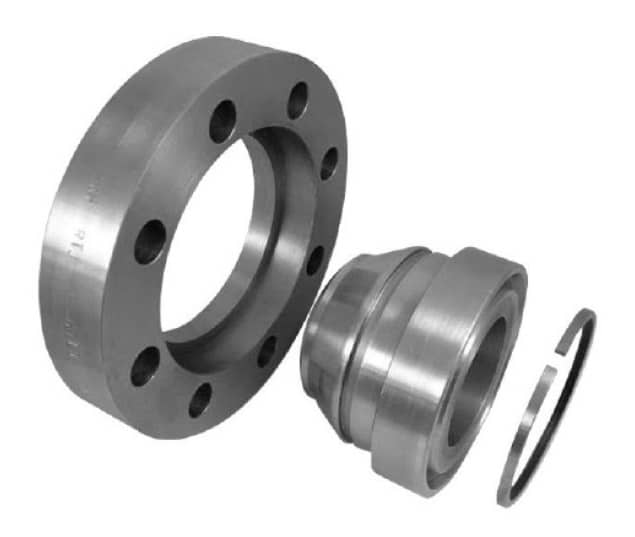
In case of a large diameter pipeline, the pipe is installed at one end keeping a standard welding neck flange with a swivel flange at the other end. This works by simply rotating the swivel flange on the pipe so that the operator achieves a proper alignment of the bolt holes in a quite easier and faster way.
Some of the major standards for a swivel ring flanges are ASME or ANSI, DIN, BS, EN, ISO, etc. The most popular standard for petrochemical application amongst all is the ANSI or ASME B16.5 or ASME B16.47. The swivel flanges are those which are available in all the standard shapes of common flanges. For instance, weld-neck, slip-on, lap-joint, socket weld etc. in all material grades with a wide dimensional range wherein the sizes vary from 3/8” to 60” and pressure varies from 150 to 2500. These flanges can easily be manufactured in carbon steel, alloy steel and stainless steel.
5. Expanding Flanges
Expanding flanges are also termed as expander flanges which are used in order to increase the bore of the pipeline from any specific point to another in order to connect pipes to any other mechanical devices like pumps, compressors and valves which are found having a different inlet sizes.
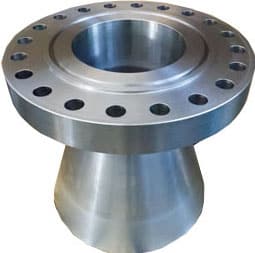
The expanding flange is commonly referred to as a welding neck flange with a highly large bore on the non-flanged end. It can be used to increase the run pipe bore only by one or two sizes strictly or maximum 4 inches. These type of flanges are preferred more as they are cheaper and lighter as compared to the combination of a butt-weld reducer and a standard flange. One of the most common materials for expanding flanges are A105 and stainless steel ASTM A182.
Expander flanges
The rating of pressure and dimensions of expanding flanges are in accordance with the ANSI or ASME B16.5 specification which is mostly available with the raised or a flat face (RF or FF). The Reducing flanges also termed as the reducer flanges which are found having a totally reversed function as compared to an expander flanges which means that they are used to decrease the bore of a pipeline. The bore of the run pipe can be reduced easily but not more than 1 or 2 sizes. If tried to reduce beyond this than a solution based on the combination of a butt weld reducer and a standard flange should be used.
Reducing flanges are mostly available in all the sizes and material grades but are not generally available from stock. These flanges are the ones which follow the same considerations in terms of specifications, sizes and material grades as that of an expander flanges. The last type of forged product which is found resembling the shape of a flange is referred to as a spectacle blind whereas not proper a flange, a blind or a ring spacer is mostly used within the pipes in order to isolate the pipeline mechanically that to in a very easy way.
